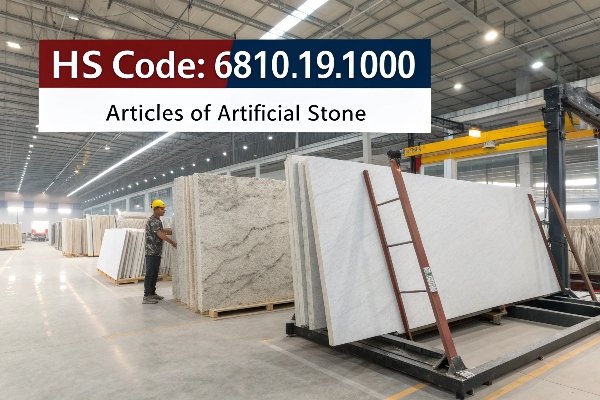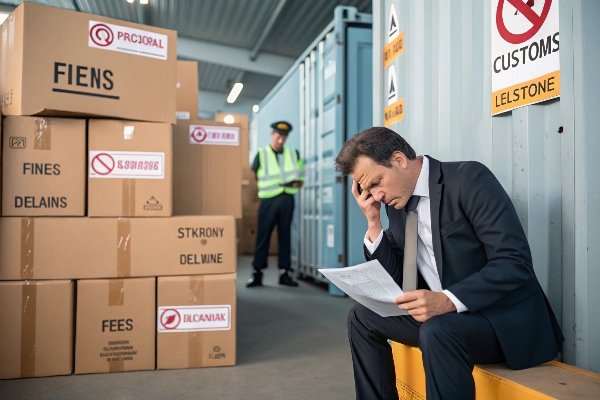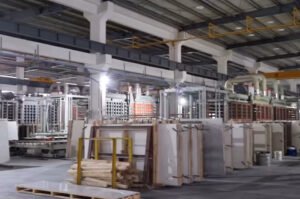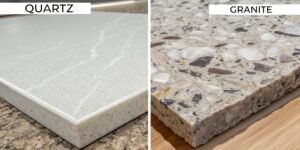Struggling to classify quartz slabs for customs clearance? The worry about potential delays and fines can be stressful. I will help you understand the correct code for a smooth process.
The most common HS code used for exporting quartz slabs from China is 6810.19.1000. This code specifically covers "Articles of artificial stone," which accurately describes engineered quartz surfaces used for countertops, walls, and flooring. Using this code correctly is your first step to seamless customs clearance.

Simply knowing the number is not enough for a procurement manager like you. I have managed logistics for countless international orders over my 15 years in this industry. I know that the details of export requirements, country variations, and potential risks are what truly matter for keeping your projects on schedule and on budget. Understanding these factors will protect your bottom line and ensure your shipments arrive without any unwanted surprises. Let’s dive deeper into what you really need to know.
What are the export requirements for quartz slabs to the USA?
Worried your quartz slab shipment will get stuck at a US port? Tired of trying to figure out complex import rules? I have the essential information you need.
To export quartz slabs to the United States, you need the correct HS code, a commercial invoice, a packing list, and a bill of lading. A Certificate of Origin (COO) is also often required. Be aware that anti-dumping duties can apply, so always check current regulations.

I've learned that a successful shipment depends on perfect paperwork. For a procurement manager responsible for multi-million dollar projects, errors are not an option. The documents must be precise. These are the core documents your customs broker will need.
Key Documentation
Your supplier must provide accurate information on all documents. The Commercial Invoice1 details the buyer, seller, price, and value of the goods. The Packing List describes the shipment's contents, including weight, dimensions, and number of slabs. The Bill of Lading or Air Waybill is the contract between the shipper and the carrier. Accuracy on these forms prevents most customs questions.
The United States can be a complex market. On top of standard customs duties, shipments of quartz from some countries have faced additional tariffs, like Section 301 tariffs or Anti-Dumping and Countervailing Duties (AD/CVD)2. These duties can significantly increase costs, which is why your supplier must be transparent about the product’s origin. At Opaly, we provide fully compliant documentation to ensure there are no surprises about duties when your shipment lands.
The Role of a Customs Broker
A good customs broker is your partner on the ground. However, their work is only as good as the paperwork we, the supplier, provide them. My job is to make their job easy. We double-check every document before it's sent to ensure it matches the order perfectly. This teamwork between the supplier and broker is what creates a smooth, predictable import process for you.
Do HS codes for quartz slabs differ between countries?
Assuming one HS code works for all your international projects? This common mistake can cause major shipping headaches and unexpected costs. I will explain why codes can vary.
Yes, HS codes for quartz slabs can differ between countries. While the first six digits are standardized globally, individual countries add their own specific digits for more detailed classification. For an import, you must use the code specific to the destination country.

This is one of the most frequent points of confusion I see. The Harmonized System (HS) is managed by the World Customs Organization (WCO) to make global trade easier. But it's only harmonized up to a point.
The Harmonized System Structure
The system is built in layers. The first six digits of an HS code are universal for every country in the WCO. For our products, this usually falls under heading 6810.19, which means "Articles of cement, of concrete or of artificial stone... Other". This initial classification is consistent whether you are shipping to Mexico, the USA, or the EU. This is the shared language of global customs.
Country-Specific Variations
After the first six digits, countries add their own suffixes to track products with more detail. For example, my company in China uses a 10-digit code for exports. The United States also uses a 10-digit code (called an HTS Code), but the last four digits might be different from China's. This is why you cannot just use my export code for your import declaration.
| Region | Code System | Common Structure | Example Use |
|---|---|---|---|
| Global | WCO HS | 6-digit | 6810.19 (Base Code) |
| USA | HTSUS | 10-digit | 6810.19.xxxx |
| European Union | TARIC | 8 to 10-digit | 6810 19 00 xx |
| China | CIQ | 10-digit | 6810.19.10.00 (Our Export Code) |
How We Help at Opaly
Part of our service is helping you navigate this. While we cannot legally advise on your country's specific import codes, we can share what codes our other clients in your region have successfully used. We always recommend you confirm the final code with your local customs broker. This small verification step prevents big problems later on.
How to determine the correct HS code for quartz slabs based on their composition?
Confused if different types of quartz surfaces need different HS codes? Unsure if the material makeup changes how it is classified? I can break down what really matters.
The correct HS code is based on the main material. Engineered quartz slabs are over 90% natural quartz bound by resin, classifying them as "artificial stone" under HS heading 6810. Minor variations in color or pattern rarely change this core classification.

I have had clients ask if our Calacatta designs, with their bold veining, need a different code than a pure white slab. The answer is almost always no. Customs officials look at the fundamental nature of the product, not its aesthetic style.
The "Artificial Stone" Classification
Engineered quartz fits perfectly into the definition of "artificial stone." It is an agglomerate—a mass of crushed stone (natural quartz) mixed with a binder (polymer resin and pigments). This manufacturing process is what places it firmly in Chapter 68 of the HS code system, which covers articles of stone. Other products in this chapter include concrete blocks and cement tiles. Understanding this "why" helps you explain the classification to anyone who asks. The product is not a natural stone slab cut from a quarry, like marble or granite, which have different HS codes.
Do Different Finishes Change the Code?
Whether a slab is polished, honed, matte, or has a textured finish does not change its HS code. These are surface treatments. The underlying material is still artificial stone. Sometimes, a customs agent might ask for more details, but the code itself remains the same. The important thing is that the material's basic composition has not changed. This consistency simplifies your procurement process because you can source a variety of styles for a project under a single, predictable classification.
A Practical Checklist for Verification
To ensure you always get it right, follow these simple steps:
- Confirm the Material: The product is over 90% quartz mixed with resin.
- Locate the Chapter: It belongs in Chapter 68, "Articles of Stone..."
- Find the Heading: It falls under heading 6810, "Articles of... artificial stone."
- Ask Your Supplier: Ask for their standard export code. As I mentioned, ours is 6810.19.1000.
- Verify Locally: Always confirm the full import code with your customs broker in the destination country.
What are the risks of using the wrong HS code for quartz slabs?
Think a small mistake on an HS code does not matter? This error can create costly delays, trigger inspections, and even lead to fines. Let's look at the risks.
Using an incorrect HS code can cause shipment delays, storage fees, fines, and even seizure of your goods. It also damages your company's reputation with customs, inviting more scrutiny on all your future shipments. The operational and financial risks are huge.

In my career, I've seen what happens when things go wrong at the port. The costs are never just about the penalty fee; the ripple effects can disrupt an entire project. It's a risk no procurement professional should have to take.
Financial Penalties and Extra Costs
The most immediate risk is financial. If customs flags your shipment for an incorrect code, your containers will be held. Port storage and demurrage fees start adding up every single day. On top of that, customs authorities can issue significant fines for non-compliance. You might also have to pay a customs broker extra to fix the problem. In some cases, a wrong code could put your goods in a category with a higher duty rate, forcing you to pay more tax than necessary. These unexpected costs can ruin a project's budget.
Operational Nightmares
As a procurement manager, your biggest fear is a supply chain interruption. A shipment stuck in customs means materials don't arrive on-site on time. I once helped a new client who learned this the hard way. Their previous supplier used a wrong HS code, and their quartz was held for three weeks. This delay pushed back a major hotel renovation, creating a domino effect of scheduling problems with installers and other contractors. This is the kind of operational chaos that a reliable supplier helps you avoid.
Long-Term Consequences
Perhaps the most damaging risk is the long-term one. Once your company is flagged for a compliance error, you lose trust with customs authorities. This can put you on a watchlist, meaning your future shipments are far more likely to be selected for physical inspection. These inspections add time and cost to every import, destroying the supply chain efficiency you work so hard to build. Working with a dependable partner who gets the classification right every time is an investment in a smooth, predictable supply chain for years to come.
Conclusion
Using the correct HS code is essential for international trade. It helps you avoid stressful delays and fines, ensuring your quartz slabs arrive on time and within budget.





